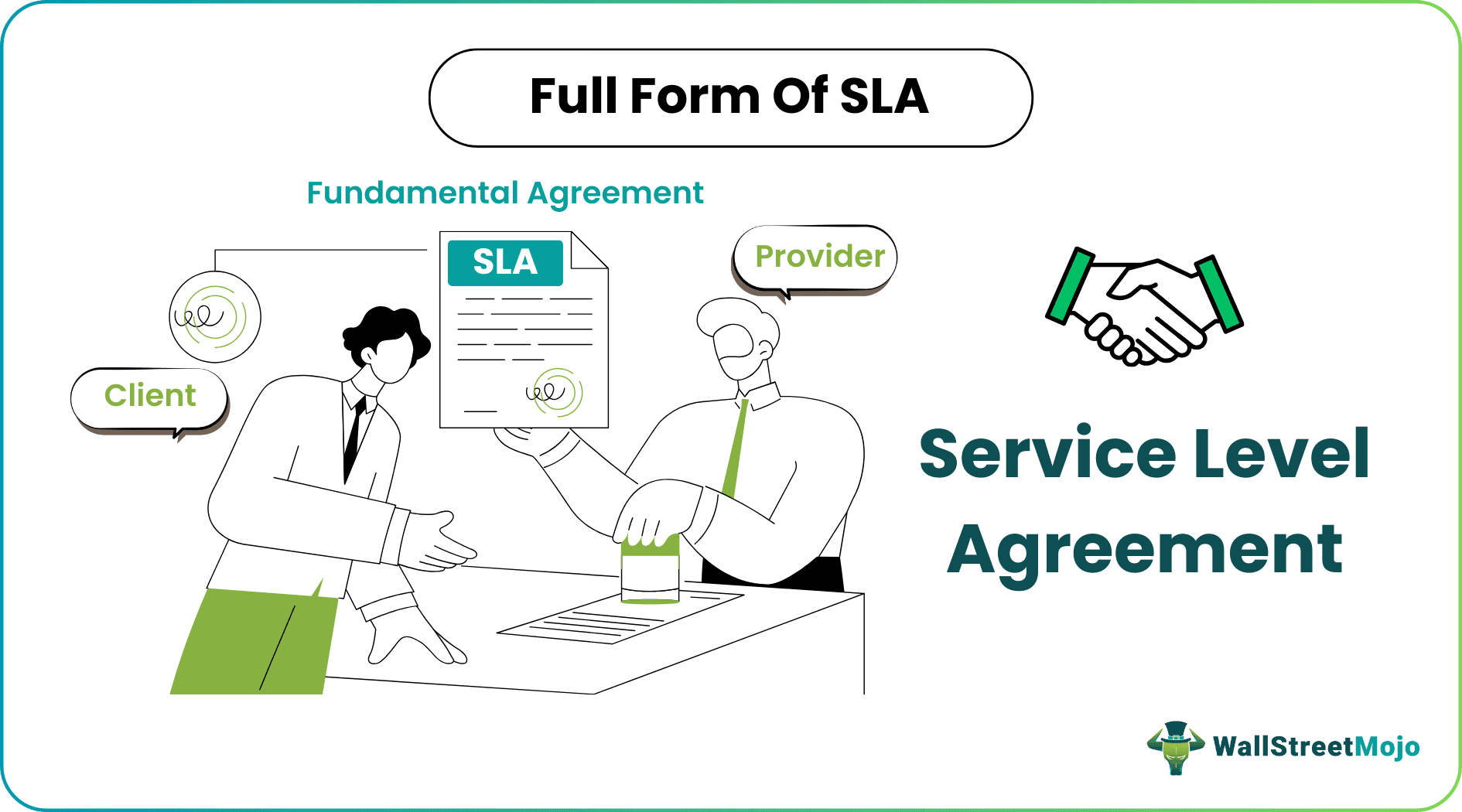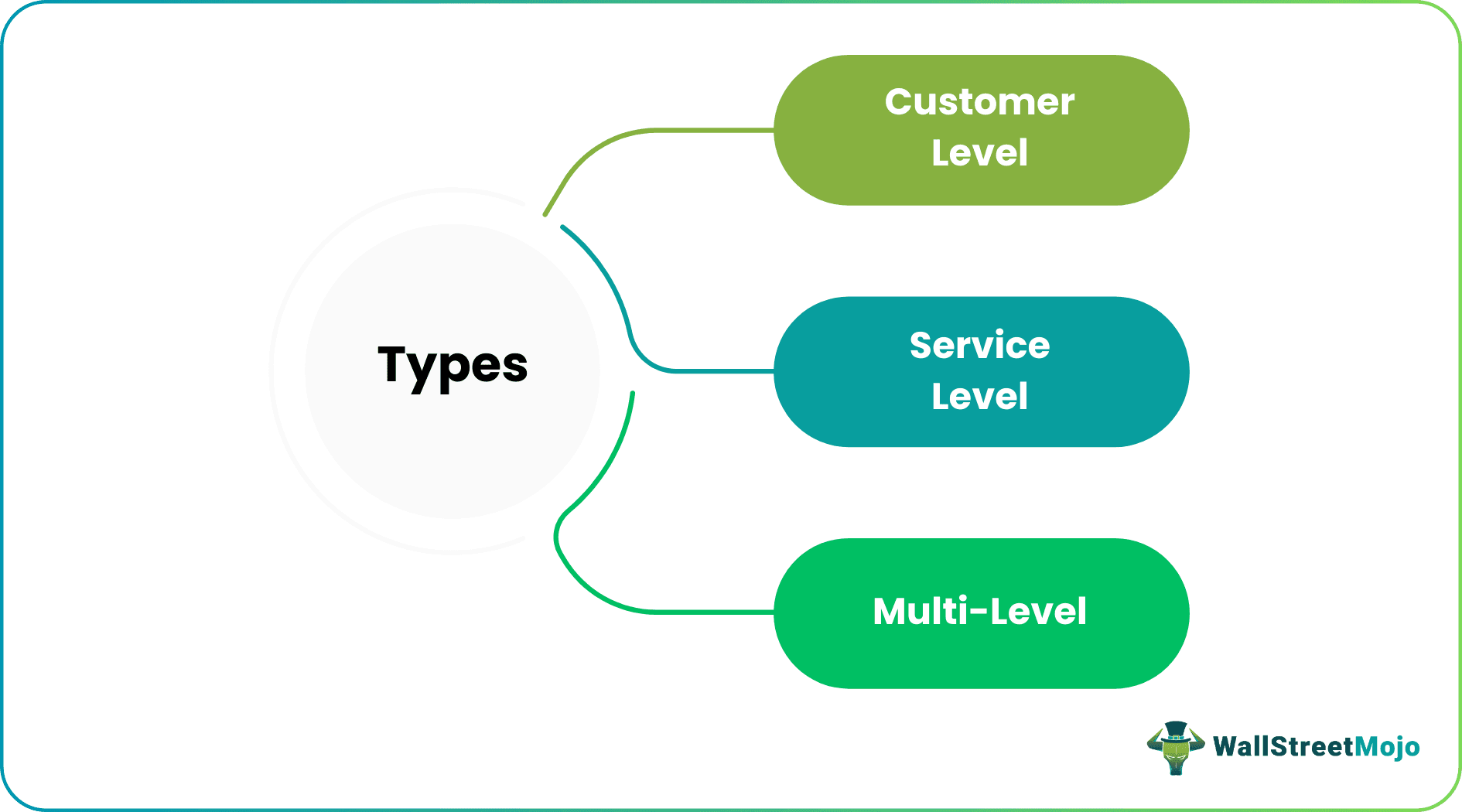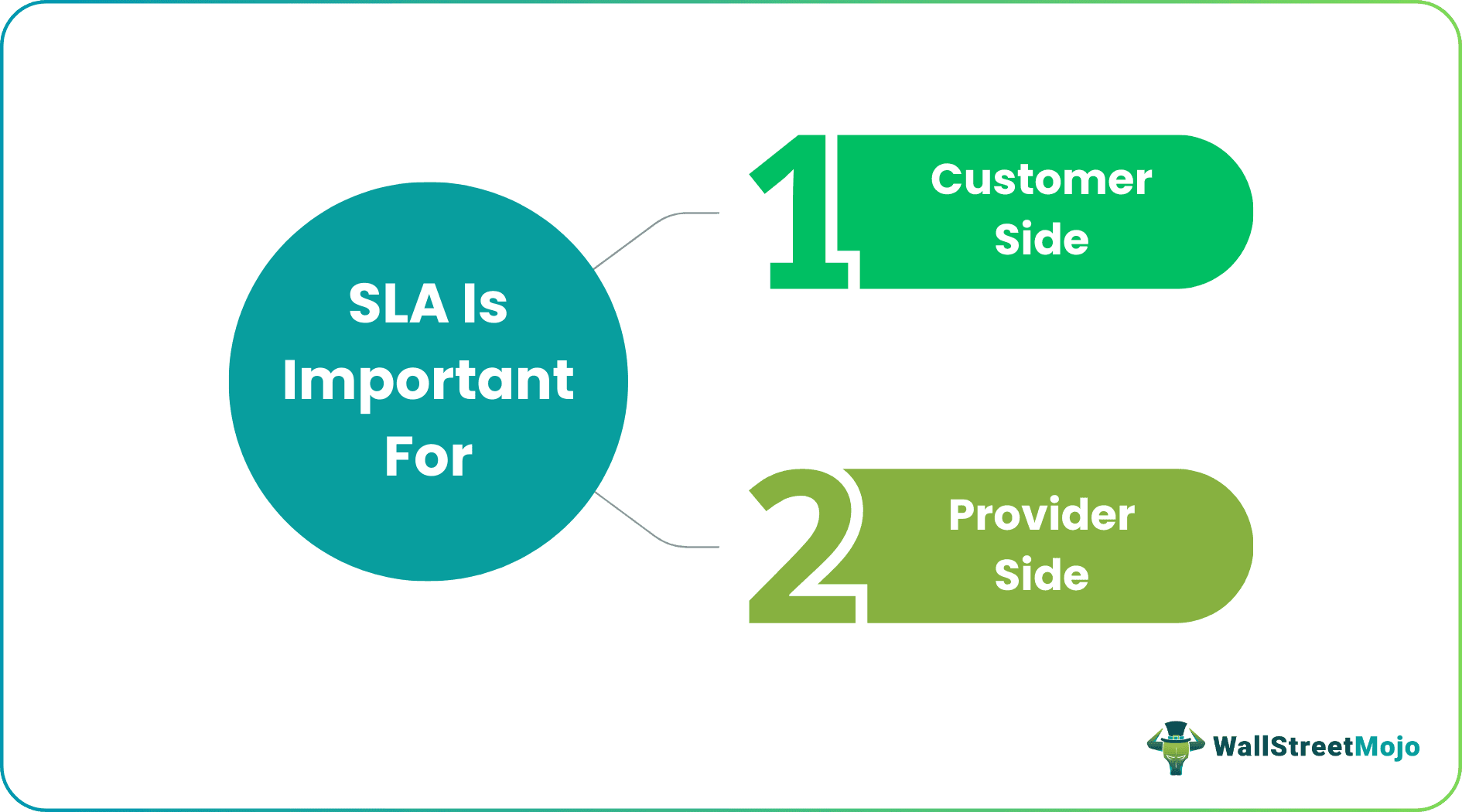Table Of Contents
Full Form of SLA - Service Level Agreement
The full form of SLA stands for Service Level Agreement. Itrefers to a fundamental agreement between the client/customer and the service provider. SLA includes:
- The service limit to provide
- Quality
- Other terms are to be met by both parties in an agreement.

Components
Components here refer to things included legally in the Service Level Agreement by both the parties:
- Service to be provided and its quality
- The performance level of service and accountability of the provider
- Reporting and Monitoring of service
- Issue-resolving techniques and time frame
- Contingency for not meeting the service expectations
- Penalties for breach of contract and who should meet those fines.

Types
There are three types. We have explained this below.

#1 - Customer Level
- This type is prepared based on every customer's needs and expectations.
- E.g., A DTH provider has different channel packs based on customer needs and cost.
#2 - Service Level
- It deals with the same or limited type of service for its customers.
- E.g., A Two-wheeler company provides only two free services for the first-year irrespective of its customer or what they purchased.
#3 - Multi-Level
- This type deals with all the above types in a single Agreement. It deals with the service level, corporate level, or customer level under one or single contracts.
- E.g., A cab-providing company may deal with a single corporate customer, but it has to provide cab facility to entire shifts in the corporate and different employees.
Why SLA Is Important?
An SLA is important for both the customer and the service provider.

Customer Side:
These points show the importance of SLA as per the customer side.
- One can measure the type of service and its level.
- Quality of service and metrics to measure or compare it with other service providers.
- What issues may arise or be covered, and the resolving part?
- Also mentions the customer part and their responsibilities in the SLAs.
Provider Side:
As per the provider, SLAs must cover these points.
- The customer details and what service are they agreed upon?
- The level, cost of service, and time of service agreement
- What issues are covered, and what is the time frame for readdressing it?
- Roles and responsibilities as a service provider
- The part for which they are not liable.
Who Needs SLA?
Every standard service provider or company needs an SLA to negotiate with the customer. Many customers need SLA to compare with vendors and ask for better services. The customer and the provider need a Service Level Agreement to understand their part better.
How to Set Metrics?
Here we will see how to set metrics in the Service Level Agreement.
Metrics
- A metric here refers to standards for measuring the performance of a service provider. One can set some basic and additional metrics based on the service provided.
- Metrics should be simple that even a layperson can understand. It should not mislead the customer about the service. If they cannot understand how to measure the service, it leads to confusion on both sides. The following are the basic metrics to be considered while setting the metrics part in an SLA.
Basic Metrics
- Availability/time of Service Period and Cost: If one can provide the service at the client's place and how long they will provide it.
- Error Log: How to deal with failures or mistakes in the service provided.
- The Technology Used: If it is a technology-based service, one should mention the technology they use.
- Security and Other Preventive Measures: How far the client's information will be confidential, and what are the preventive measures available?
- Past Business Outcomes: How well they performed in the previous services?
These are general points to be considered before setting the metrics of an SLA, as these metrics lead the service on the right path and eliminate extra costs.
Examples
Let us consider we are an event management service provider. Based on the customer service type, SLA will be multi-level as they deal with different sets of customers.
If there is an event for corporate customers, it will organize differently. If any individual customer wants to celebrate his birthday, the theme will be as per his need. Likewise, the service provider itself will arrange shows. Hence, the service differs per customer. They will also prepare the Service Level Agreement as per the need.
The SLA of an event management company will include:
- About the company and its past works
- Various events they are organizing
- Type of service they are arranging and customer details
- Customers need the theme, color, etc.
- Cost for the whole event
- Customer side responsibilities and payment details
- Discounts, if any, in case of failure to fulfill any of the customer’s needs they agreed upon.
Conclusion
A Service Level Agreement is an important part of service type, as it gives the customer a clear picture of the service and the provider's responsibilities. If there is no SLA, a customer can expect too much. If not provided, he may refuse to pay. At the same time, a provider can deny that some service is not covered.
